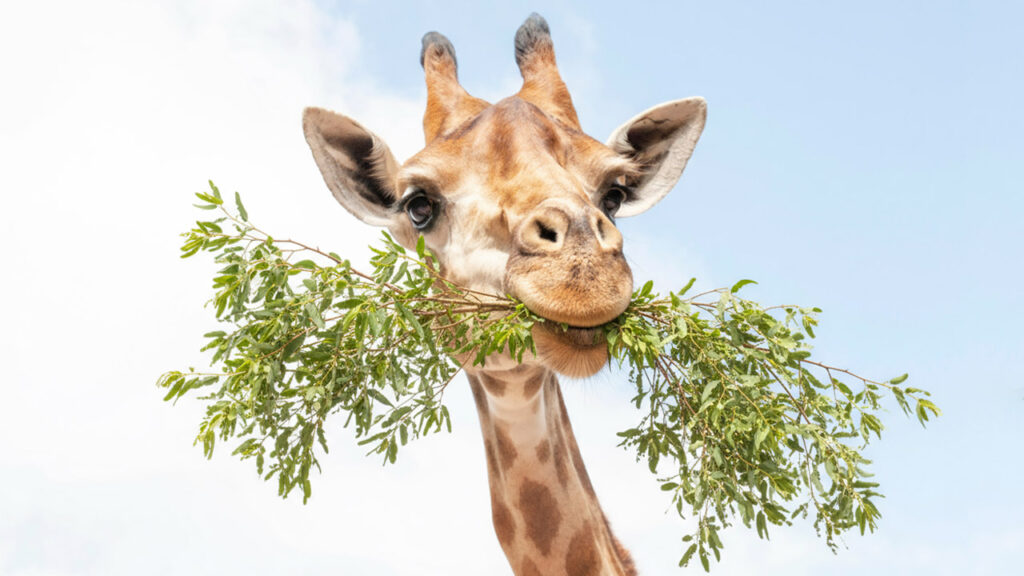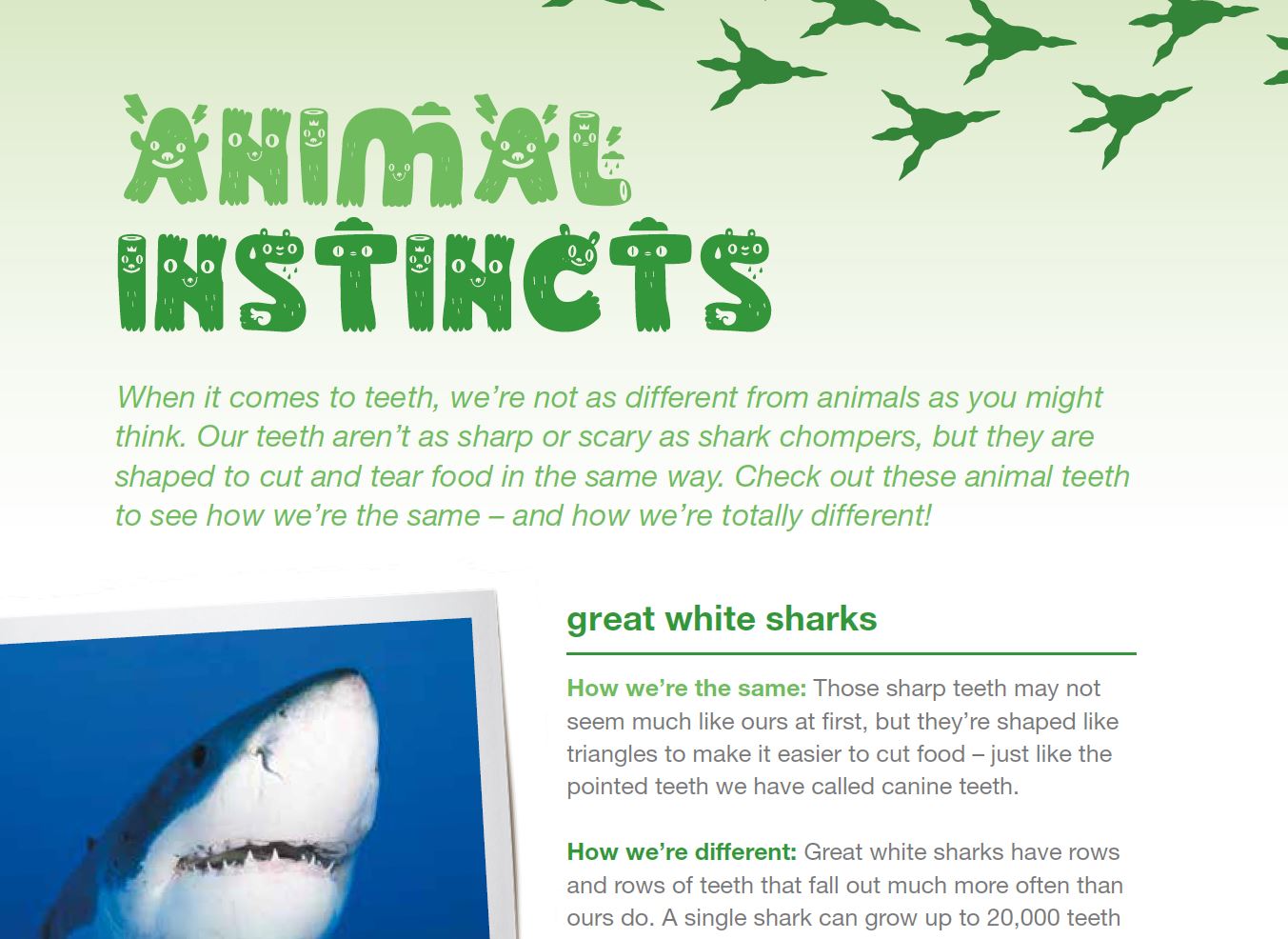
How do our teeth and animal teeth compare? | Dental Worksheet
Sept. 22
Did you know your teeth aren’t too different from the teeth of animals? Many animals have unique features about their teeth allowing them to thrive in the wild. Though, their teeth are also similar to ours in various ways. Discover how great white sharks, giraffes, tyrannosaurus rexes and narwhals have dental features that make them both similar and different from us.
Like humans, sharks have triangular pointed teeth that function to make cutting through food easier while they eat. These are called canine teeth in humans. But compared to humans, great white sharks have many more teeth and lose them more frequently. They grow in rows inside the shark’s mouth.
Giraffes have wide, flat teeth, which allow them to eat grass and other plants. Just like us, they have 32 teeth. However, instead of having top teeth in the front, they have a pad allowing them to grind up the plants and grass they eat.
The tyrannosaurus rex used its fangs like we do, cutting up their food and making meat easier to consume. They had about 60 teeth, much more than our 32 teeth, and they could be up to 9 inches long.
Narwhals have teeth made from the same biological material as our teeth, such as hard enamel, dentin and pulp. But their tooth grows on their head! Not only that, but the hard enamel located on the outside of our teeth is located on the inside of the narwhal’s horn-like tooth. That softer tissue, dentin, is located on the outside instead of enamel.
Click on the image to view the dental worksheet on animal teeth, and learn how similar and different our teeth are from various animals. Learn from the fun facts located within this handout, and share it with a friend!
